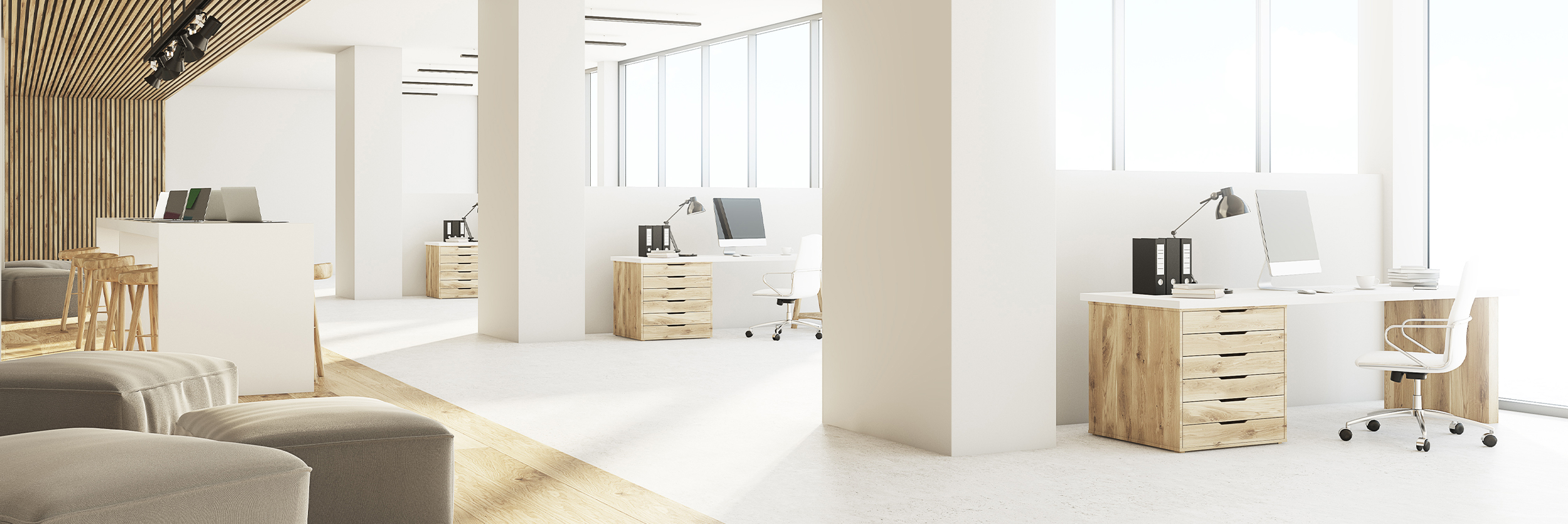This article originally appeared in the July/August 2020 issue of The Network
Let me begin by saying that as a broker and leader in a multinational real estate services firm, one would argue that my firm’s bias would be to support the office environment as we have come to know it. However, we at Cushman & Wakefield are also consumers of office space and interact with countless clients both as tenants and investors and we can say with certainty, that one size does not fit all either from an occupancy or design perspective.
Over the last few years, as technology has improved and internet bandwidth in our homes has become more accessible and affordable, many companies, large and small, across the world began adopting work from home policies as part of their overall workplace strategy. Several experts at the time weighed in telling us that this was the beginning of the end of the traditional office environment. As employees were opting for the flexibility to work from home, their employers began to decrease their square footage requirements, leading to reduced footprints. Assigned seating in both open and closed offices became obsolete as the hoteling concept took off, providing reserved workspace for employees wishing to work on company premises.
When COVID-19 was declared a global pandemic by the World Health Organization on March 11, 2020, our physical workplaces shut down, as did the need for many brick and mortar locations. Except for our respective homes and essential services, doomsday scenarios about the future of commercial real estate began to circulate.
As a real estate professional in a major metropolitan area and my home city of Montreal, I reflected on the fate of my industry. I wondered about others that were threatened by unpredictable change and how they evolved. For instance, how did the ability to watch movies from home (streaming services via internet) affect the movie theatre business and what parallels could I draw for the traditional workspace? A prominent movie theatre operator and entrepreneur, Vincenzo Guzzo, answered the question when a reporter asked; “Isn’t (Netflix) going to kill the movie theatre business?” His rhetorical response sheds some light about the impact of public spaces, as he replied, “Doesn’t everyone have a kitchen in their home, yet people continue to go to restaurants?” He went on to say that over the last 20 years, availability and accessibility of movies at home have not curbed the desire to go to a movie theatre and that in fact, theatre operators have been increasing their footprints.
One can argue that food and beverage, live venues, and movie theatre establishments have exploded across the world as people seek out in-person experiences. It has been interesting to observe that one of the most popular pet peeves during the pandemic, aside from not being able to get a professional haircut, is the inability to sit and dine in local restaurants. Why? Well, while I don’t have a background in sociology or psychology, and nor am I professionally versed in human behavior, the need to interact and experience life activities with others or bring together members of a team in an office setting under a corporate culture to develop and innovate towards a common goal is very real.
Working from home will certainly continue to be an option for many employees in the short term as we collectively try to “flatten the curve.” However, as treatments or vaccines develop, there may be a return to a workplace offering collaboration, flexibility, and a more permanent environment so that employees feel that they are part of an ecosystem, part of something. In the interim, one can only wonder the long-term impact remote working will have on teams and on team building. Companies spend millions of dollars a year to foster culture amongst their human capital, their talent, and in recent years, have redesigned workspaces to include collaborative areas with some offering game rooms and slides. These experiences aren’t found in our respective homes. Business travelers will tell you that being present in person far outweighs a videoconference meeting. Employees who work away from their corporate head office will often complain that, despite being able to stay connected via video and teleconference technology, they never really feel like they are part of the corporate culture, the proverbial water cooler interaction that builds and solidifies relationships. Instead, they feel like they are seated at the kids table in the corporate spectrum.
Out of sight, out of mind is something we all have in common during this pandemic, and as deconfinement begins, those that remain in their work at home environment will likely be left out as their colleagues meet for after-work drinks; from their subordinates, their peers, and their superiors. Based on a recent survey by Cushman & Wakefield, Millennials and Gen Z are the leading generations experiencing difficulty working from home, likely feeling the exclusion.
It is my belief that the need to interact and bond with colleagues will outweigh some of the benefits experienced working from home. Not only that, many employees have been struggling with a number of issues from the limited space in their personal environment, some working from the edge of their kitchen table, to constant distractions mounting. For some, these challenges will outweigh the desire to work from home in the long term. The office space is more than just a place to work. It is an experience that, with the right conditions, will lead to better productivity and a healthier work life balance.






